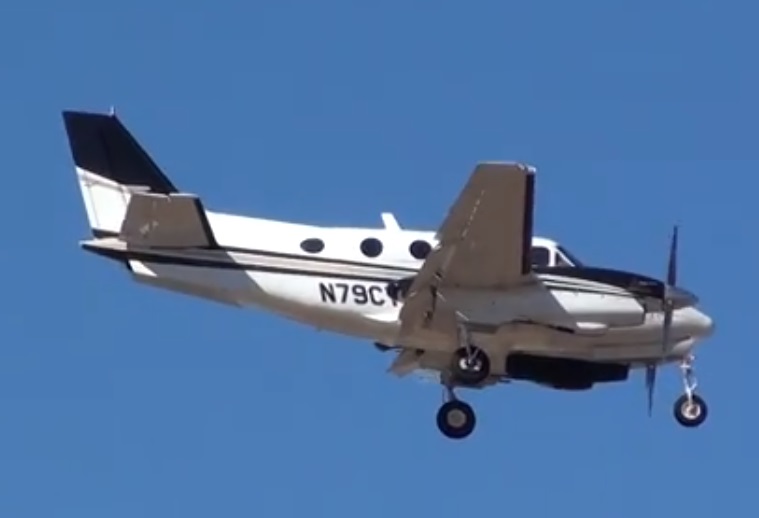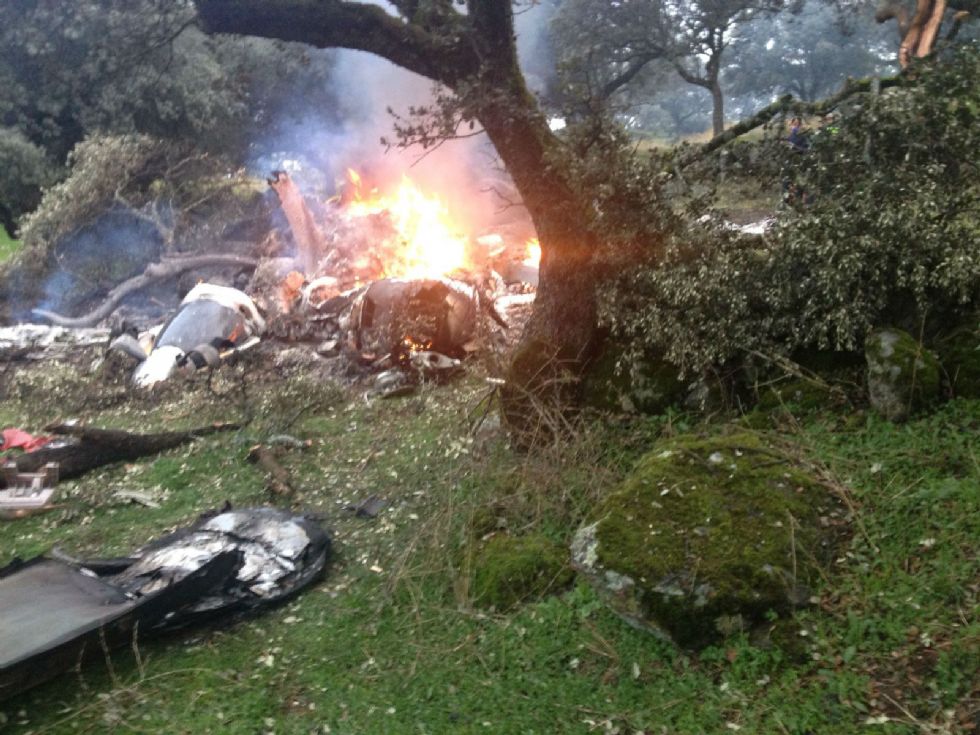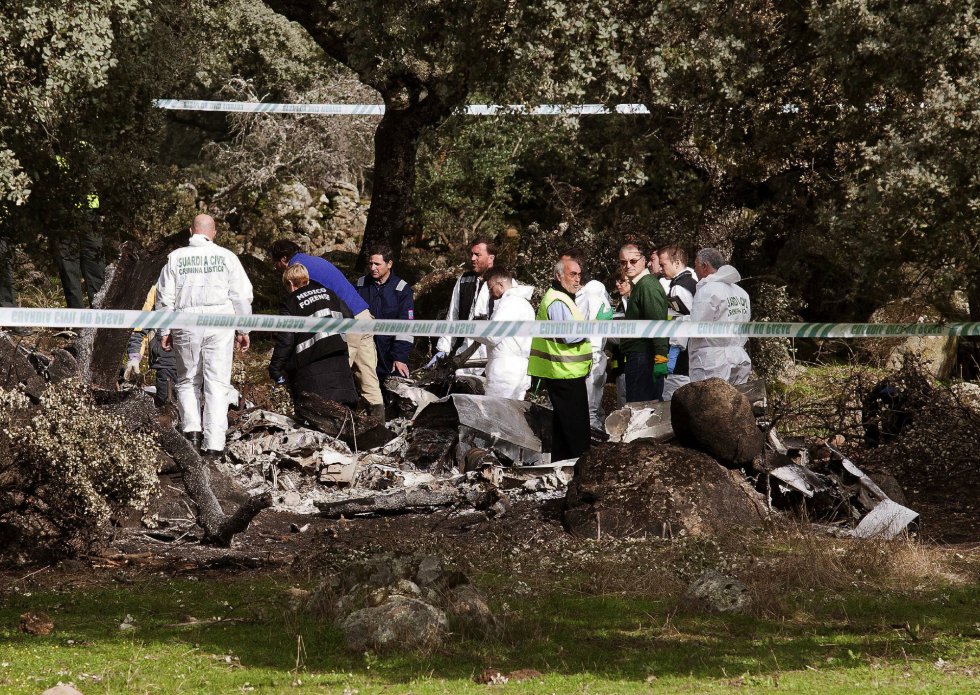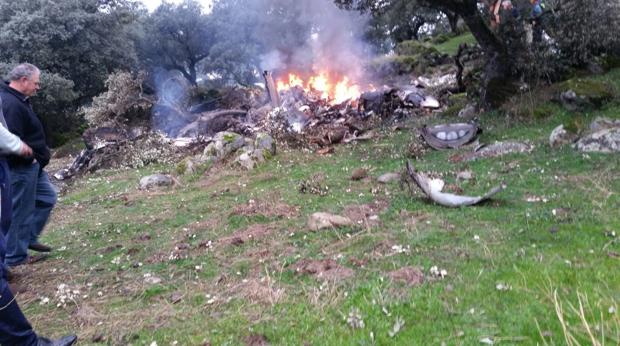Country
Crash of a Beechcraft E90 King Air in Ruidoso: 2 killed
Date & Time:
Jun 13, 2017 at 2210 LT
Registration:
N48TA
Survivors:
No
Schedule:
Ruidoso – Abilene
MSN:
LW-283
YOM:
1978
Crew on board:
1
Crew fatalities:
Pax on board:
1
Pax fatalities:
Other fatalities:
Total fatalities:
2
Captain / Total hours on type:
25.00
Aircraft flight hours:
12621
Circumstances:
The commercial pilot had filed an instrument flight rules flight plan and was departing in dark night visual meteorological conditions on a cross-country personal flight. A witness at the departure airport stated that during takeoff, the airplane sounded and looked normal. The witness said that the airplane lifted off about halfway down runway 24, and there was "plenty" of runway remaining for the airplane to land. The witness lost sight of the airplane and did not see the accident because the airport hangars blocked her view. The wreckage was located about 2,400 ft southeast of the departure end of runway 24. Examination of the accident site indicated that the airplane impacted in a nose-down attitude with a left bank of about 20°. A left turn during departure was consistent with the airport's published instrument departure procedures for obstacle avoidance, which required an immediate climbing left turn while proceeding to a navigational beacon located about 7 miles east-northeast of the airport. Examination of the wreckage did not reveal any evidence of preimpact mechanical malfunctions that would have precluded normal operation. The pilot had reportedly been awake for about 15 hours and was conducting the departure about the time he normally went to sleep and, therefore, may have been fatigued about the time of the event; however, given the available evidence, it was impossible to determine the role of fatigue in this event. Although the circumstances of the accident are consistent with spatial disorientation, there was insufficient evidence to determine whether it may have played a role in the sequence of events.
Probable cause:
The pilot's failure to maintain clearance from terrain after takeoff during dark night conditions.
Final Report:
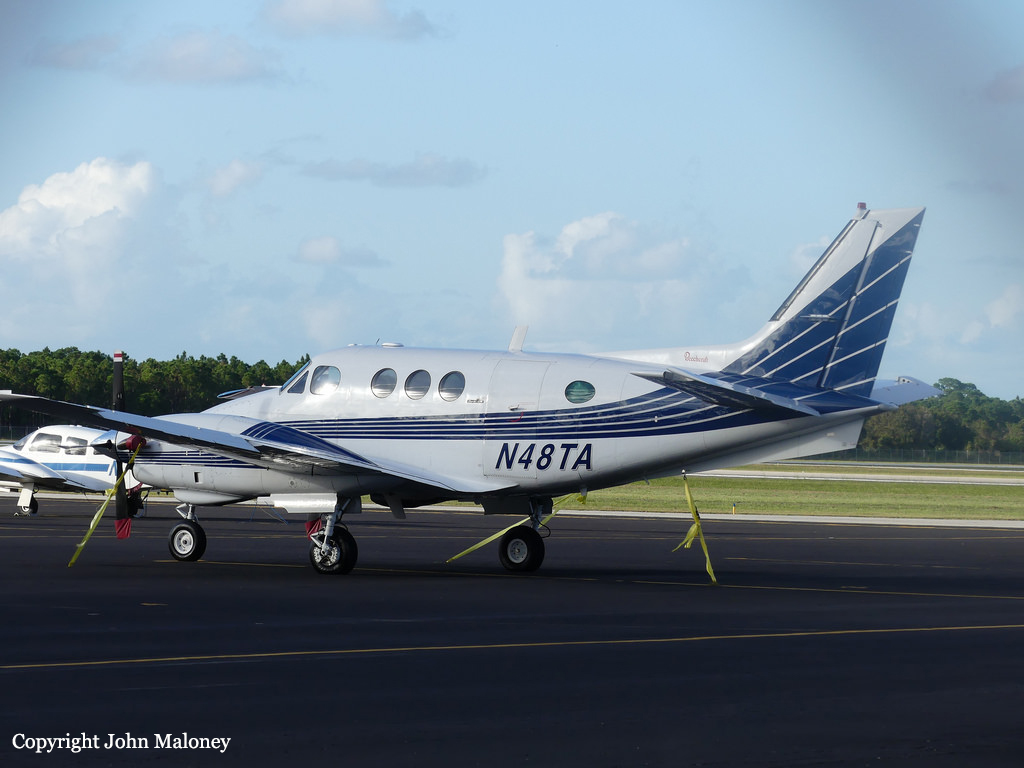
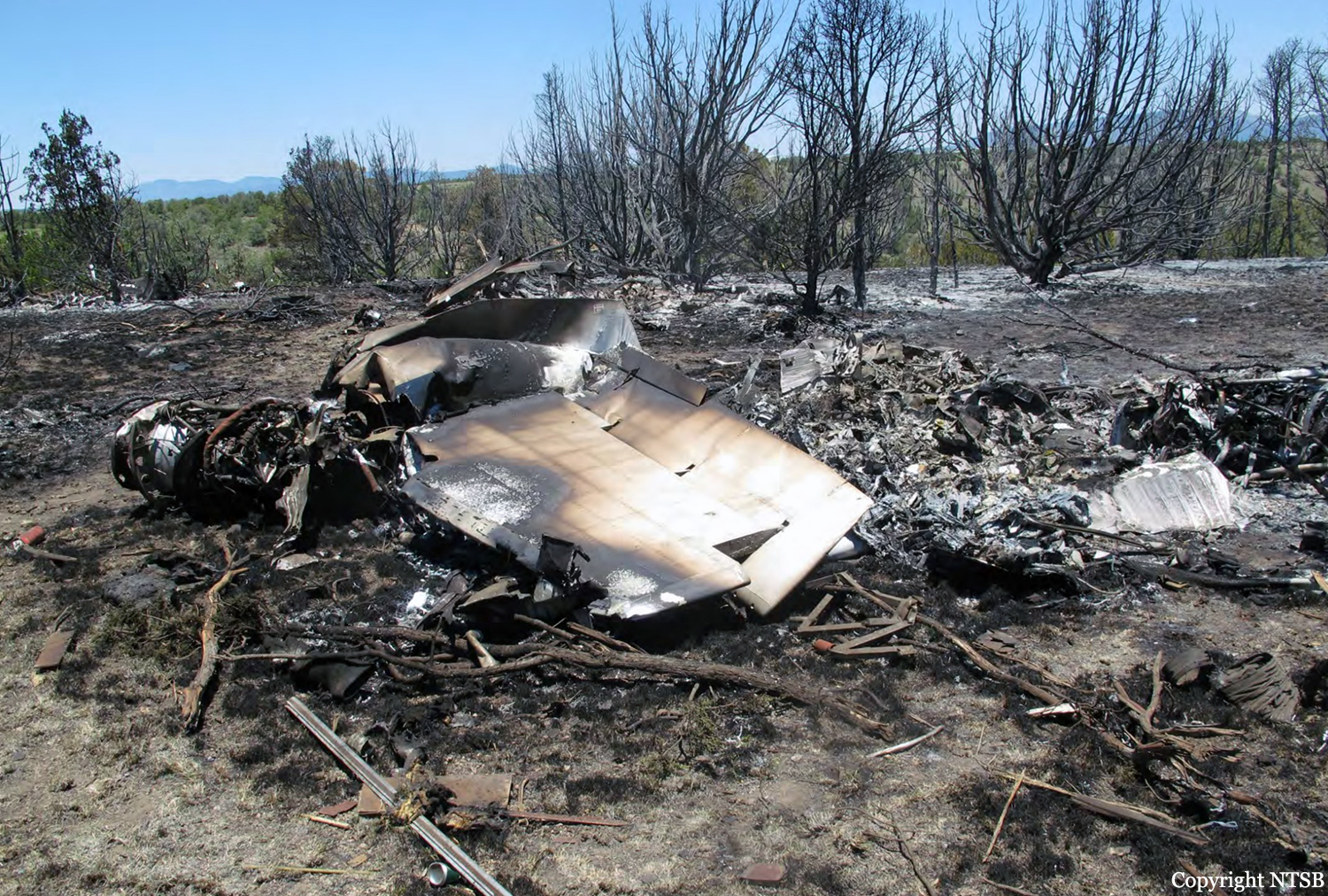
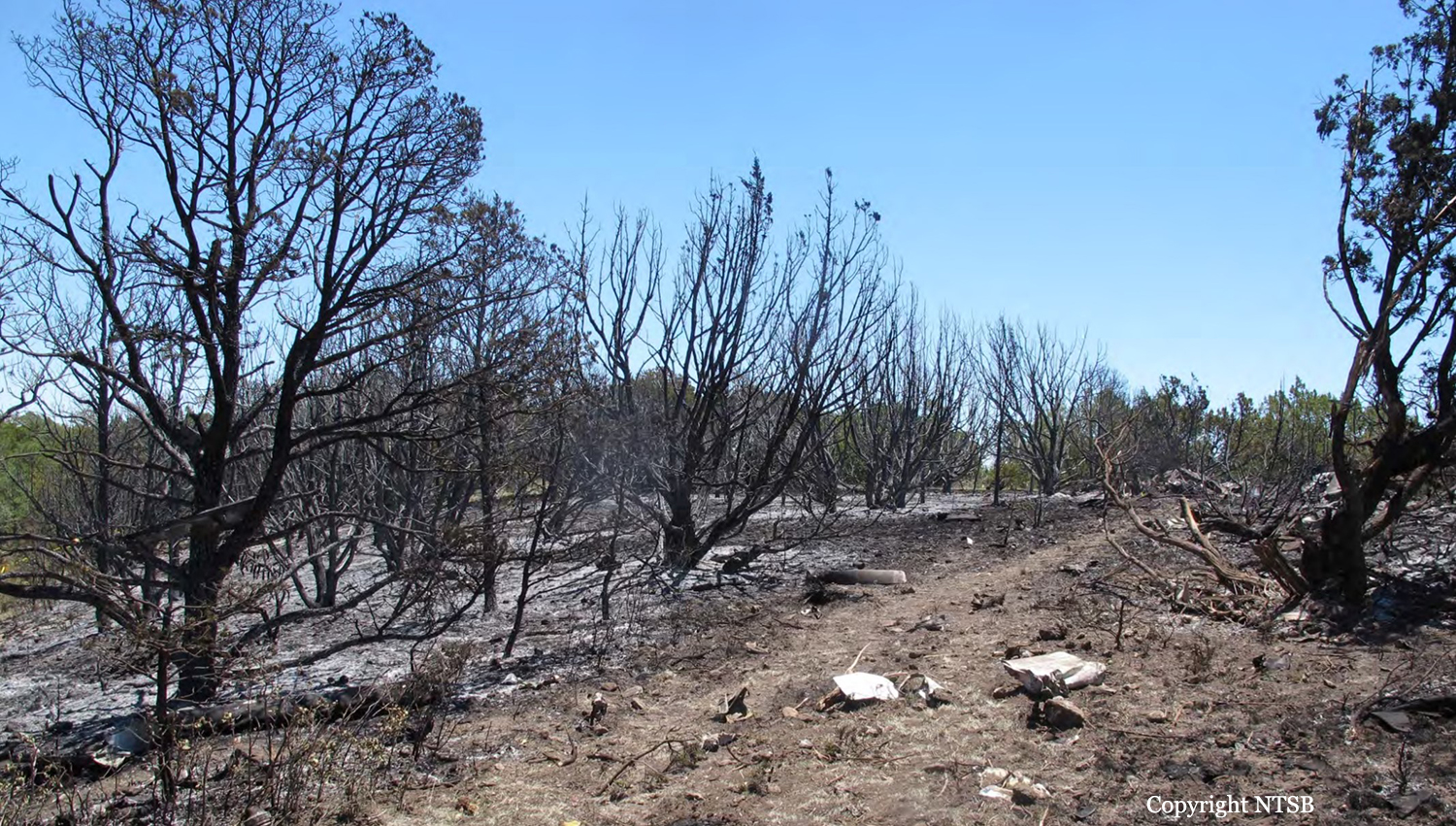
Crash of a Beechcraft C90B King Air in Rattan
Date & Time:
Feb 14, 2017 at 1145 LT
Registration:
N1551C
Survivors:
Yes
Schedule:
McAlester – Idabel
MSN:
LJ-1365
YOM:
1994
Crew on board:
1
Crew fatalities:
Pax on board:
2
Pax fatalities:
Other fatalities:
Total fatalities:
0
Captain / Total hours on type:
400.00
Aircraft flight hours:
7862
Circumstances:
The pilot stated that the engine start and airplane power-up were normal for the air medical flight with two medical crewmembers. The engine ice vanes were lowered (as required for ground operations) and then were subsequently raised before takeoff. Takeoff and climbout were routine, and the pilot leveled off the airplane at the assigned cruise altitude. The air traffic controller informed the pilot of heavy showers near the destination airport, and the pilot "put the ice vanes down." The pilot indicated that, shortly afterward, the airplane experienced two "quick" electrical power fluctuations in which "everything went away and then came back," and "[s]econds later the entire [electrical] system failed." Due to the associated loss of navigation capability while operating in instrument meteorological conditions (IMC), the pilot set a general course for better weather conditions based on information from his preflight weather briefing. While the pilot attempted to find a suitable hole in the clouds to descend through under visual conditions, the left engine lost power. The pilot ultimately located a field through the cloud cover and executed a single-engine off-airport landing, which resulted in substantial damage to the right engine mount and firewall. A postaccident examination of the airplane and systems did not reveal any anomalies consistent with an in-flight electrical system malfunction. The three-position ignition and engine start/starter-only switches were in the ON position, and the engine anti-ice switches were in the ON position. When the airplane battery was initially checked during the examination, the voltmeter indicated 10.7 volts (normal voltage is 12 volts); the battery was charged and appeared to function normally thereafter. The loss of electrical power was likely initiated by the pilot inadvertently selecting the engine start switches instead of the engine anti-ice (ice vane) switches. This resulted in the starter/generators changing to starter operation and taking the generator function offline. Airplane electrical power was then being supplied solely by the battery, which caused it to deplete and led to a subsequent loss of electrical power to the airplane. A postaccident examination revealed that neither wing fuel tank contained any visible fuel. The left nacelle fuel tank did not contain any visible fuel, and the right nacelle fuel tank appeared to contain about 1 quart of fuel. The lack of fuel onboard at the time of the accident is consistent with a loss of engine power due to fuel exhaustion. This was a result of the extended flight time as the pilot attempted to exit instrument conditions after the loss of electrical power to locate a suitable airport. Further, the operator reported that 253 gallons (1,720 lbs) of fuel were on board at takeoff, and the accident flight duration was 3.65 hours. At maximum range power, the expected fuel consumption was about 406 lbs/hour, resulting in an endurance of about 4.2 hours. Thus, the pilot did not have the adequate fuel reserves required for flying in IMC. Both the pilot and medical crewmembers described a lack of communication and coordination among crewmembers as the emergency transpired. This resulted in multiple course adjustments that hindered the pilot's ability to locate visual meteorological conditions before the left engine fuel supply was exhausted.
Probable cause:
The loss of electrical power due to the pilot's inadvertent selection of the engine start switches and the subsequent fuel exhaustion to the left engine as the pilot attempted to locate visual meteorological conditions. Contributing to the accident were the pilot's failure to ensure adequate fuel reserves on board for the flight in instrument meteorological conditions and the miscommunication between the pilot and medical crewmembers.
Final Report:



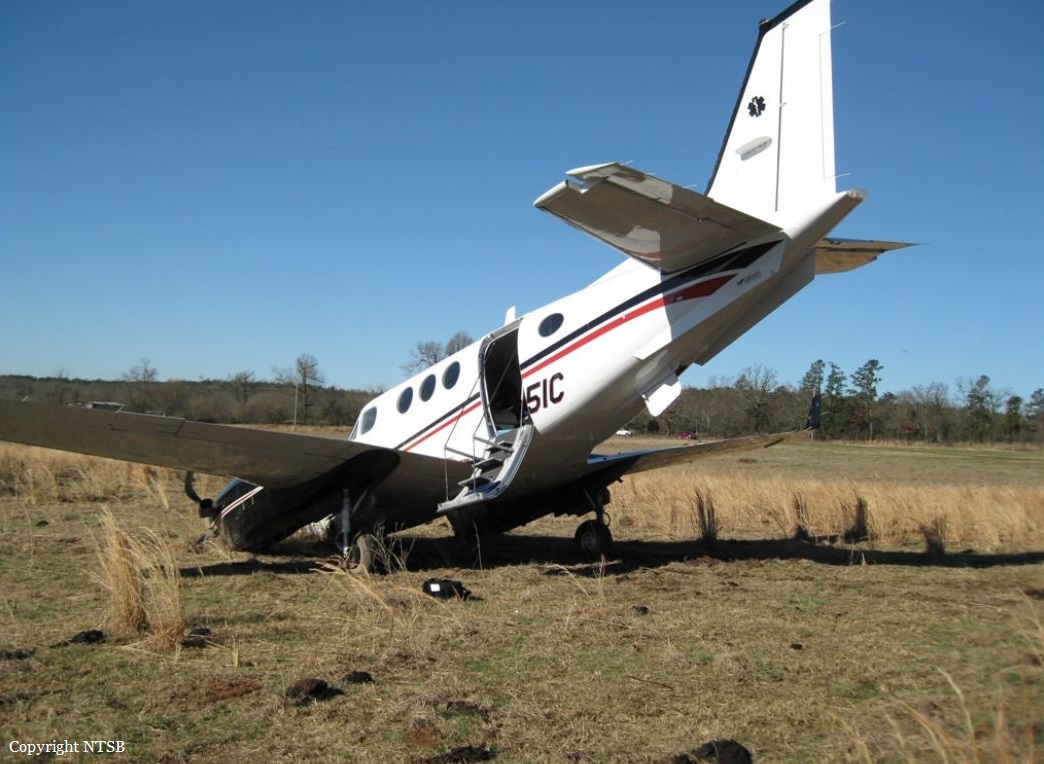
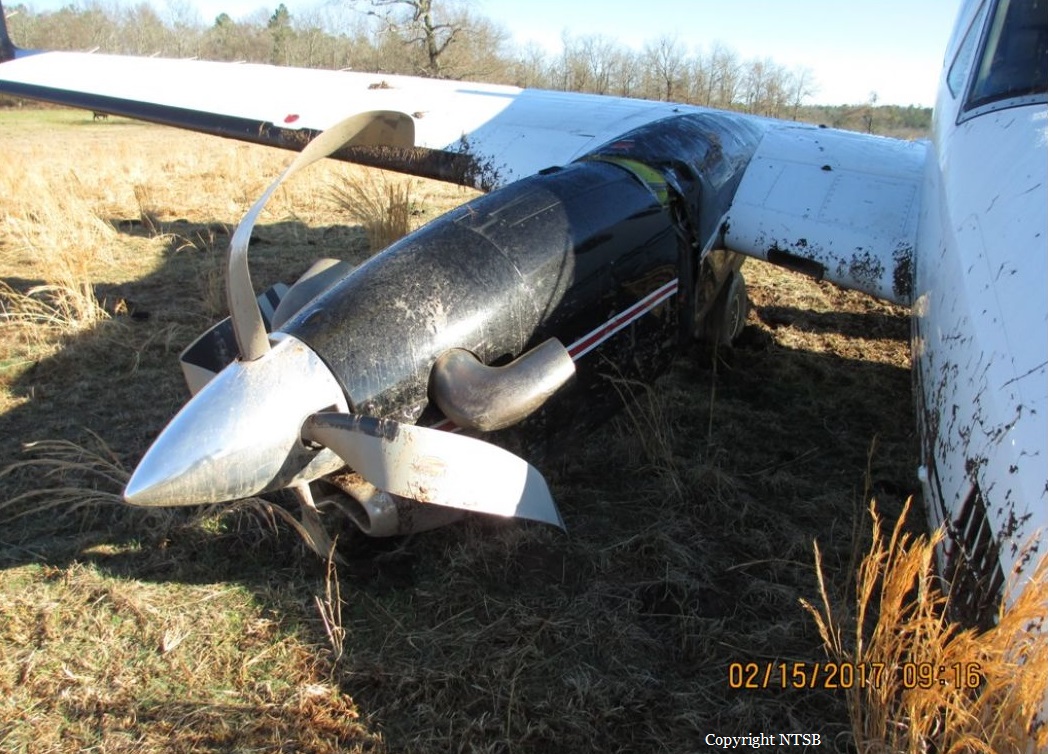
Crash of a Beechcraft C90GT King Air off Paraty: 5 killed
Date & Time:
Jan 19, 2017 at 1244 LT
Registration:
PR-SOM
Survivors:
No
Schedule:
Campo de Marte - Paraty
MSN:
LJ-1809
YOM:
2007
Crew on board:
1
Crew fatalities:
Pax on board:
4
Pax fatalities:
Other fatalities:
Total fatalities:
5
Captain / Total hours on type:
2924.00
Circumstances:
The twin engine aircraft departed Campo de Marte Airport at 1301LT bound for Paraty. With a distance of about 200 km, the flight should take half an hour. The approach to Paraty Airport was completed in poor weather conditions with heavy rain falls reducing the visibility to 1,500 metres. While descending to Paraty, the pilot lost visual contact with the airport and initiated a go-around. Few minutes later, while completing a second approach, he lost visual references with the environement then lost control of the aircraft that crashed in the sea near the island of Rasa, about 4 km short of runway 28. Quickly on site, rescuers found a passenger alive but it was impossible to enter the cabin that was submerged. The aircraft quickly sank by a depth of few metres and all five occupants were killed, among them Carlos Alberto, founder of Hotel Emiliano and the Supreme Court Justice Teori Zavascki who had a central role overseeing a massive corruption investigation about the Brazilian oil Group Petrobras.
Probable cause:
Contributing factors:
- Adverse meteorological conditions - a contributor
At the moment of the impact of the aircraft, there was rain with rainfall potential of 25mm/h, covering the Paraty Bay region, and the horizontal visibility was 1,500m. Such horizontal visibility was below the minimum required for VFR landing and take-off operations. Since the SDTK aerodrome allowed only operations under VFR flight rules, the weather conditions proved to be impeding the operation within the required minimum safety limits.
- Decision-making process - a contributor
The weather conditions present in SDTK resulted in visibility restrictions that were impeding flight under VFR rules. In this context, the accomplishment of two attempts to approach and land procedures denoted an inadequate evaluation of the minimum conditions required for the operation at the Aerodrome.
- Disorientation - undetermined
The conditions of low visibility, of low height curve on the water, added to the pilot stress and also to the conditions of the wreckage, which did not show any fault that could have compromised the performance and/or controllability of the aircraft, indicate that the pilot most likely had a spatial disorientation that caused the loss of control of the aircraft.
- Emotional state - undetermined
Through the analysis of voice, speech and language parameters, variations in the emotional state of the pilot were identified that showed evidence of stress in the final moments of the flight. The pilot's high level of anxiety may have influenced his decision to make another attempt of landing even under adverse weather conditions and may have contributed to his disorientation.
- Tasks characteristics - undetermined
The operations in Paraty, RJ, demanded that pilots adapt to the routine of the operators, which was characteristic of the executive aviation. In addition, among operators, possibly because of the lack of minimum operational requirements in SDTK, the pilots who landed even in adverse weather conditions were recognized and valued by the others. Although there were no indications of external pressure on the part of the operator, these characteristics present in the operation in Paraty, RJ, may have favored the pilot's self-imposed pressure, leading him to operate with reduced safety margins.
- Visual illusions - undetermined
The flight conditions faced by the pilot favored the occurrence of the vestibular illusion due to the excess of "G" and the visual illusion of homogeneous terrain. Such illusions probably had, consequently, the pilot's sense that the bank angle was decreasing and that he was at a height above the real. These sensations may have led the pilot to erroneously correct the conditions he was experiencing. Thus, the great bank angle and the downward movement, observed at the moment of the impact of the aircraft, are probably a consequence of the phenomena of illusions.
- Work-group culture - a contributor
Among the members of the pilot group that performed routine flights to the region of Paraty, RJ, there was a culture of recognition and appreciation of those operating under adverse conditions, to the detriment of the requirements established for the VFR operation. These shared values promoted the adherence to informal practices and interfered in the perception and the adequate analysis of the risks present in the operation in SDTK.
- Adverse meteorological conditions - a contributor
At the moment of the impact of the aircraft, there was rain with rainfall potential of 25mm/h, covering the Paraty Bay region, and the horizontal visibility was 1,500m. Such horizontal visibility was below the minimum required for VFR landing and take-off operations. Since the SDTK aerodrome allowed only operations under VFR flight rules, the weather conditions proved to be impeding the operation within the required minimum safety limits.
- Decision-making process - a contributor
The weather conditions present in SDTK resulted in visibility restrictions that were impeding flight under VFR rules. In this context, the accomplishment of two attempts to approach and land procedures denoted an inadequate evaluation of the minimum conditions required for the operation at the Aerodrome.
- Disorientation - undetermined
The conditions of low visibility, of low height curve on the water, added to the pilot stress and also to the conditions of the wreckage, which did not show any fault that could have compromised the performance and/or controllability of the aircraft, indicate that the pilot most likely had a spatial disorientation that caused the loss of control of the aircraft.
- Emotional state - undetermined
Through the analysis of voice, speech and language parameters, variations in the emotional state of the pilot were identified that showed evidence of stress in the final moments of the flight. The pilot's high level of anxiety may have influenced his decision to make another attempt of landing even under adverse weather conditions and may have contributed to his disorientation.
- Tasks characteristics - undetermined
The operations in Paraty, RJ, demanded that pilots adapt to the routine of the operators, which was characteristic of the executive aviation. In addition, among operators, possibly because of the lack of minimum operational requirements in SDTK, the pilots who landed even in adverse weather conditions were recognized and valued by the others. Although there were no indications of external pressure on the part of the operator, these characteristics present in the operation in Paraty, RJ, may have favored the pilot's self-imposed pressure, leading him to operate with reduced safety margins.
- Visual illusions - undetermined
The flight conditions faced by the pilot favored the occurrence of the vestibular illusion due to the excess of "G" and the visual illusion of homogeneous terrain. Such illusions probably had, consequently, the pilot's sense that the bank angle was decreasing and that he was at a height above the real. These sensations may have led the pilot to erroneously correct the conditions he was experiencing. Thus, the great bank angle and the downward movement, observed at the moment of the impact of the aircraft, are probably a consequence of the phenomena of illusions.
- Work-group culture - a contributor
Among the members of the pilot group that performed routine flights to the region of Paraty, RJ, there was a culture of recognition and appreciation of those operating under adverse conditions, to the detriment of the requirements established for the VFR operation. These shared values promoted the adherence to informal practices and interfered in the perception and the adequate analysis of the risks present in the operation in SDTK.
Final Report:
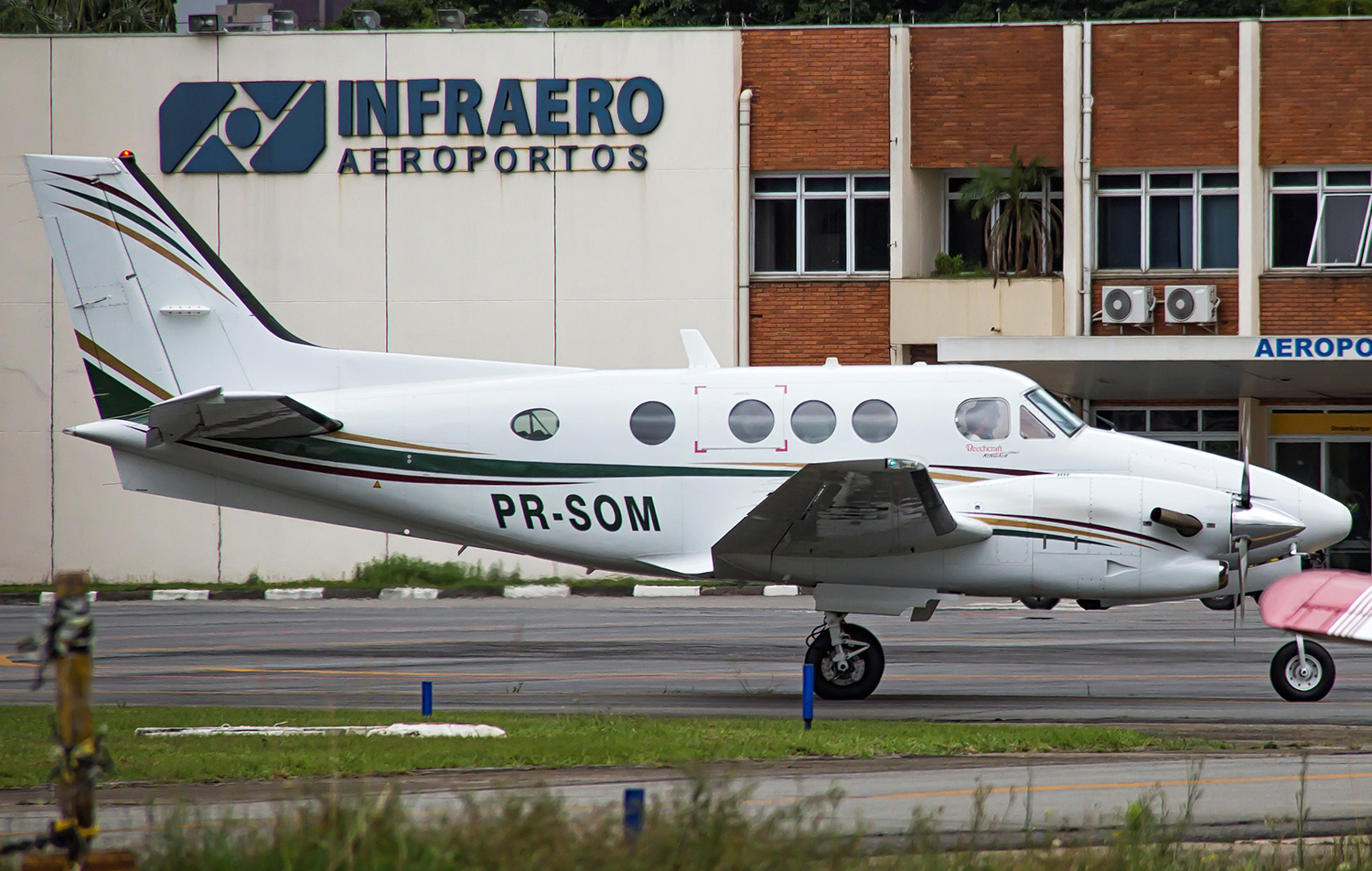
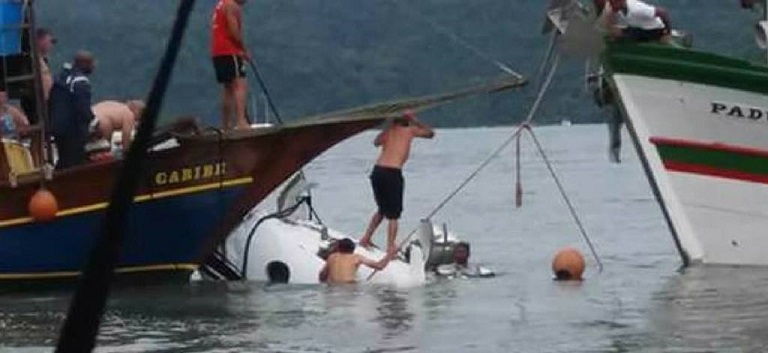

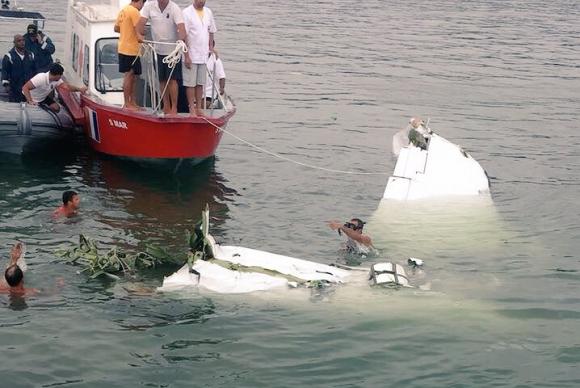
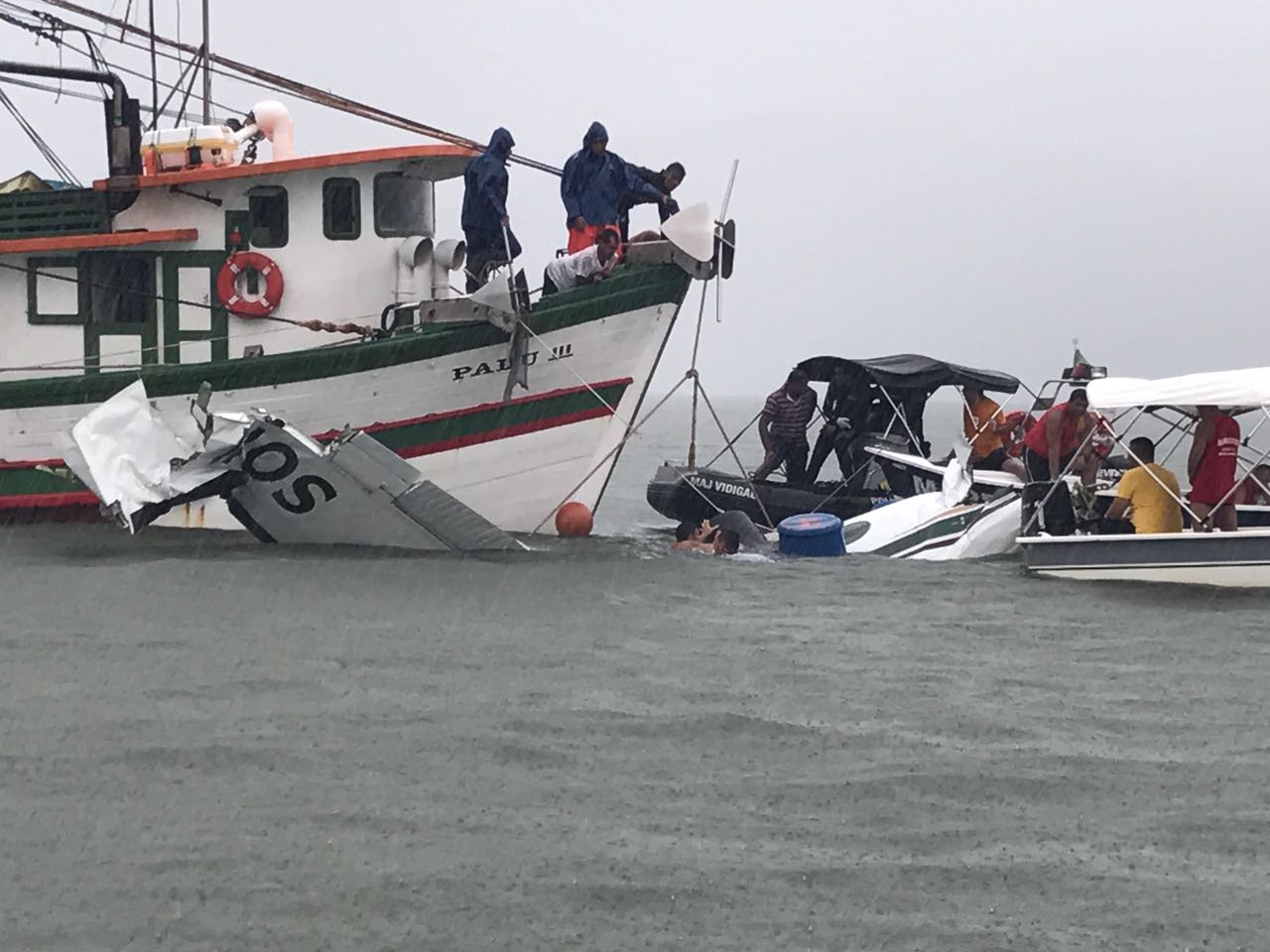
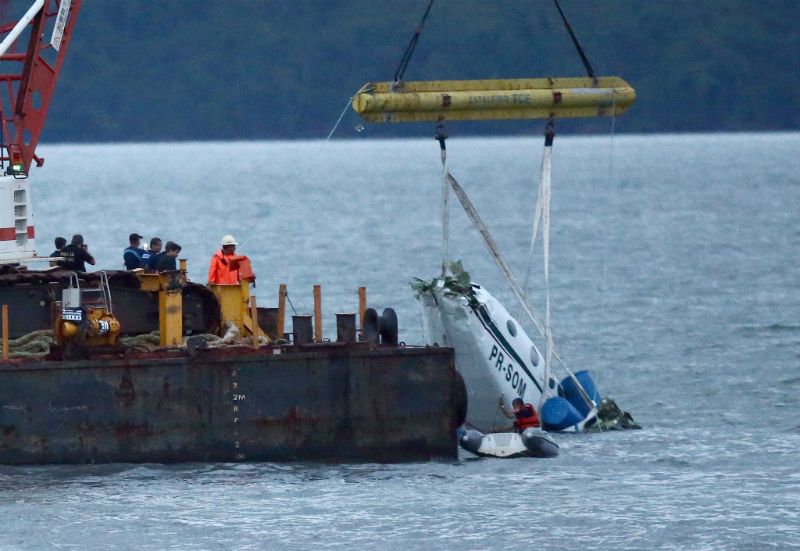
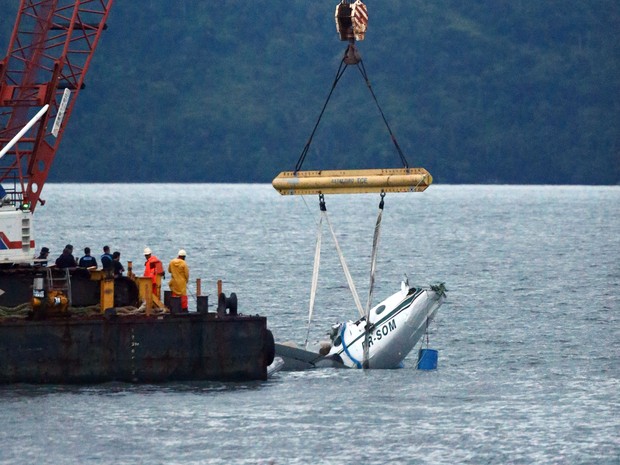
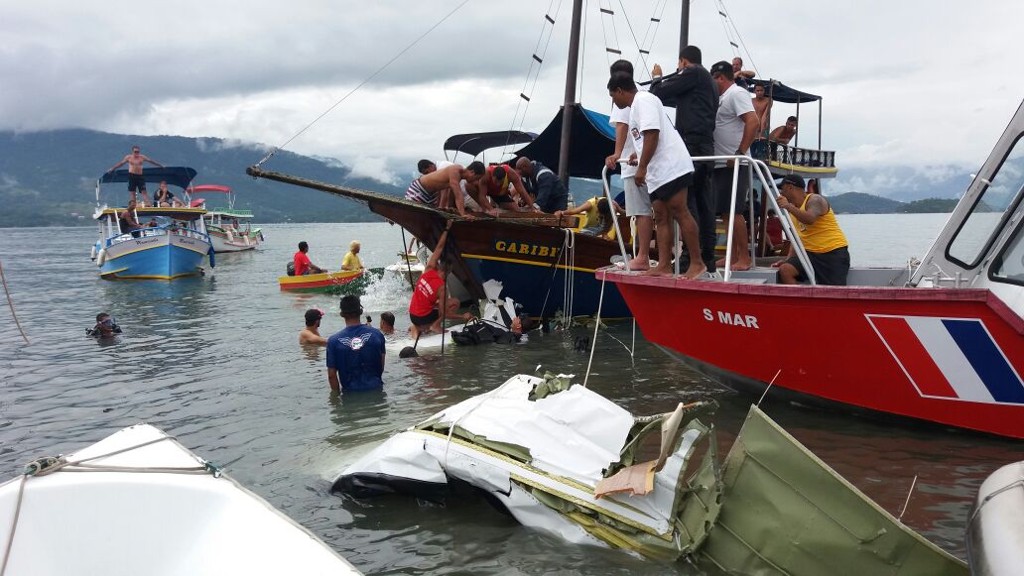




Crash of a Beechcraft E90 King Air in Sotillo de las Palomas: 4 killed
Date & Time:
Dec 4, 2016 at 1617 LT
Registration:
N79CT
Survivors:
No
Schedule:
Madrid – Cascais
MSN:
LW-303
YOM:
1979
Crew on board:
1
Crew fatalities:
Pax on board:
3
Pax fatalities:
Other fatalities:
Total fatalities:
4
Circumstances:
The twin engine aircraft departed Madrid-Cuatro Vientos Airport on a private flight to Cascais, Portugal, carrying three passengers and one pilot. One of the reasons for the flight was to repair the weather radar at a Portuguese maintenance center that specialized in this equipment. The pilot had to delay the takeoff until 1557LT due to bad weather conditions. The aerodrome of Cuatros Vietnos was in instrument conditions (IMC), which forced its closing from 0900LT until 1444LT. At 1615LT, the aircraft was en route, climbing from flight level 190 to its authorized cruise level of 210. Moments later, according to a detailed analysis of the data taken from the radar, there was a yaw to the left, and the aircraft started to turn in this direction and suddenly lose altitude. After this event, the airspeed fell quickly and gradually until the aircraft stalled. The aircraft went into a spin, which after some time turned into a flat spin. As the airplane descended out of control, and with the spin fully developped, loads were placed on the horizontal tail that exceeded the design loads, causing the tail to break up in flight into five parts before the aircraft impacted the ground. The aircraft was completely destroyed by the impact and sibsequent fire, and its four occupants were killed in the accident.
Probable cause:
The investigation has concluded that this accident was caused by the loss of control of the aircraft in flight due to a stall and subsequent spin. Due to the high degree of destruction of the aircraft's wreckage after the ground impact and subsequent fire, and the lack of other pertinent data to do so, it has not been possible to determine with precision the sequence of the process leading to the aircraft stall/spin.
The investigation identified the following contributing factors:
- The decision to make the flight with adverse meteorological conditions (IMC) along the planned route, considering the fact that the weather radar was not operational.
- The forecast of moderate to strong icing conditions in areas of the route (presence of cumulonimbus with caps of up to 35,000 feet and with temperatures between -17°C and -19°C at flight level FL180) suggests that the formation of ice or its accumulation on the aircraft has been a significant contributory factor in this accident
- The use of the autopilot and the failure to disengage it when the emergency situation arose, as it is concluded from the detailed analysis of the radar data, could have contributed significantly to the process that resulted in the loss of control of the aircraft.
- The inadequate training of the pilot (who lacked the type rating for the accident aircraft) in abnormal or emergency situations on the accident aircraft.
The investigation identified the following contributing factors:
- The decision to make the flight with adverse meteorological conditions (IMC) along the planned route, considering the fact that the weather radar was not operational.
- The forecast of moderate to strong icing conditions in areas of the route (presence of cumulonimbus with caps of up to 35,000 feet and with temperatures between -17°C and -19°C at flight level FL180) suggests that the formation of ice or its accumulation on the aircraft has been a significant contributory factor in this accident
- The use of the autopilot and the failure to disengage it when the emergency situation arose, as it is concluded from the detailed analysis of the radar data, could have contributed significantly to the process that resulted in the loss of control of the aircraft.
- The inadequate training of the pilot (who lacked the type rating for the accident aircraft) in abnormal or emergency situations on the accident aircraft.
Final Report:
